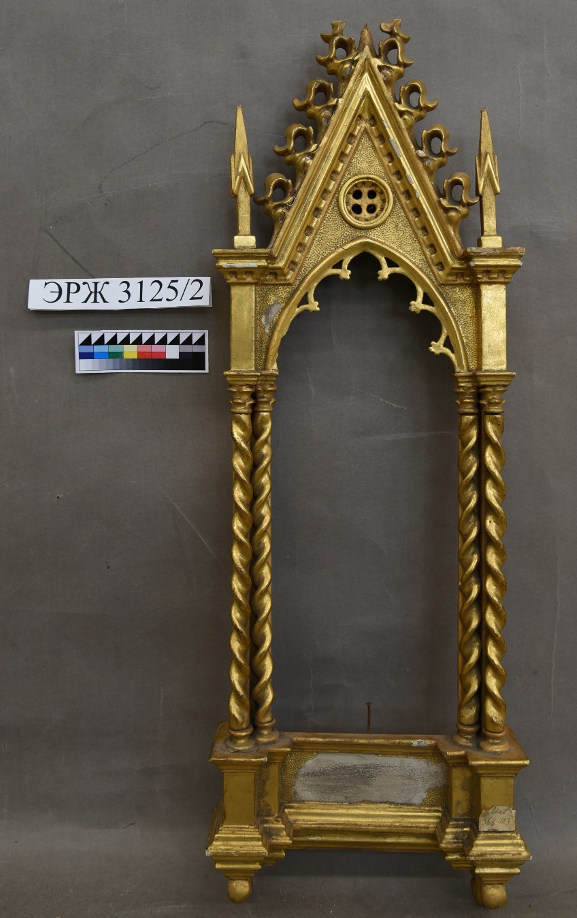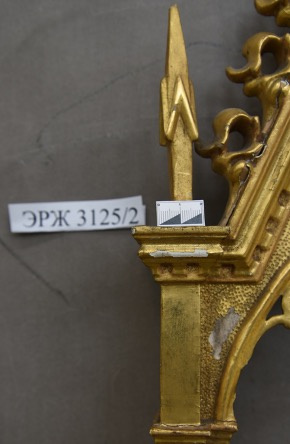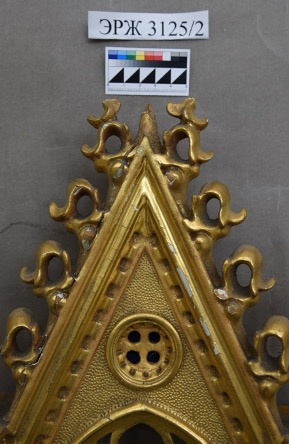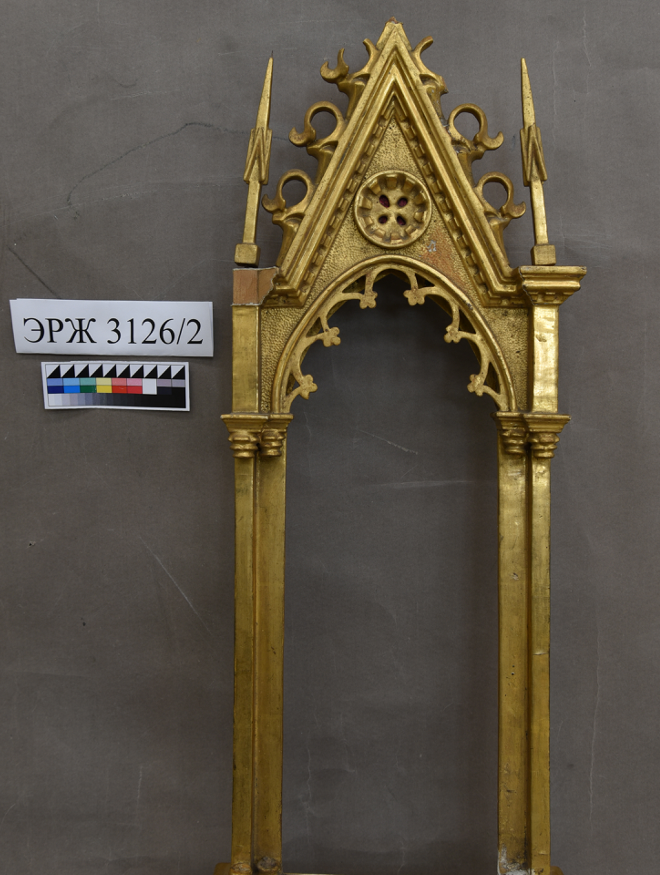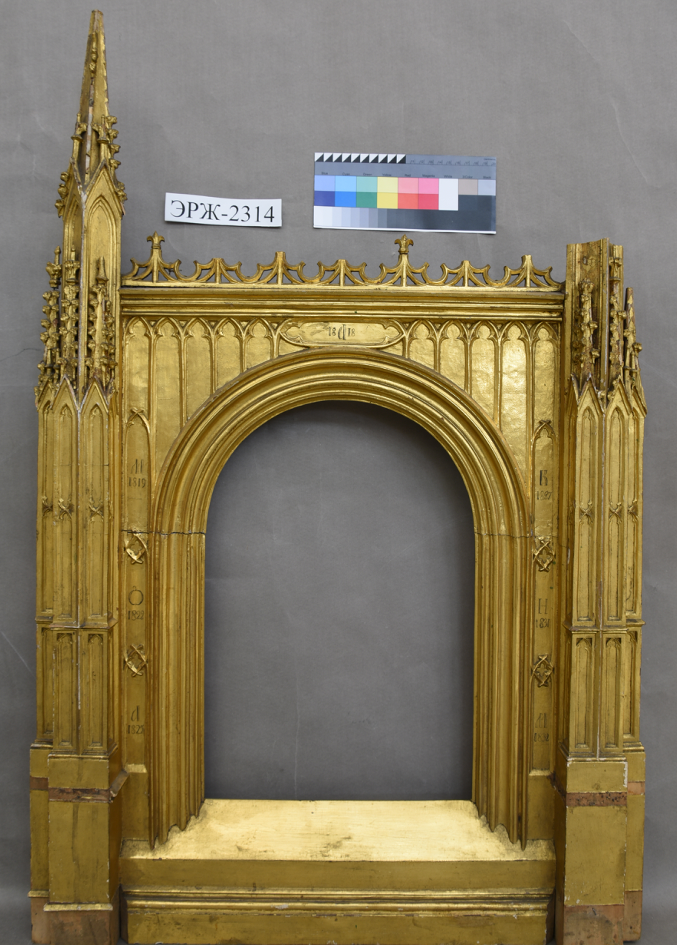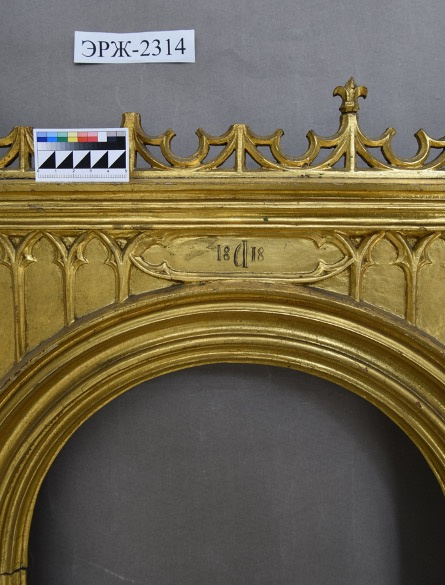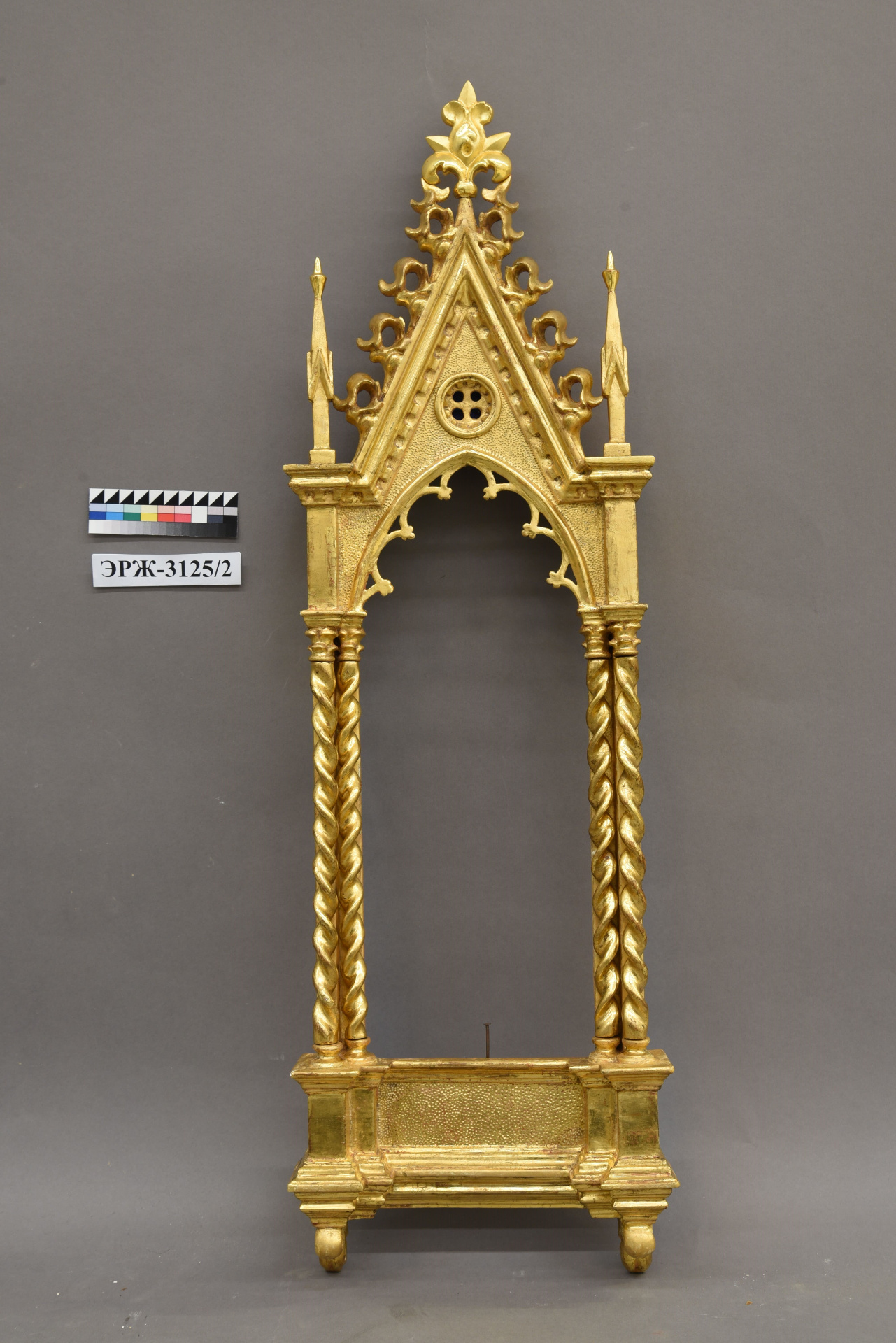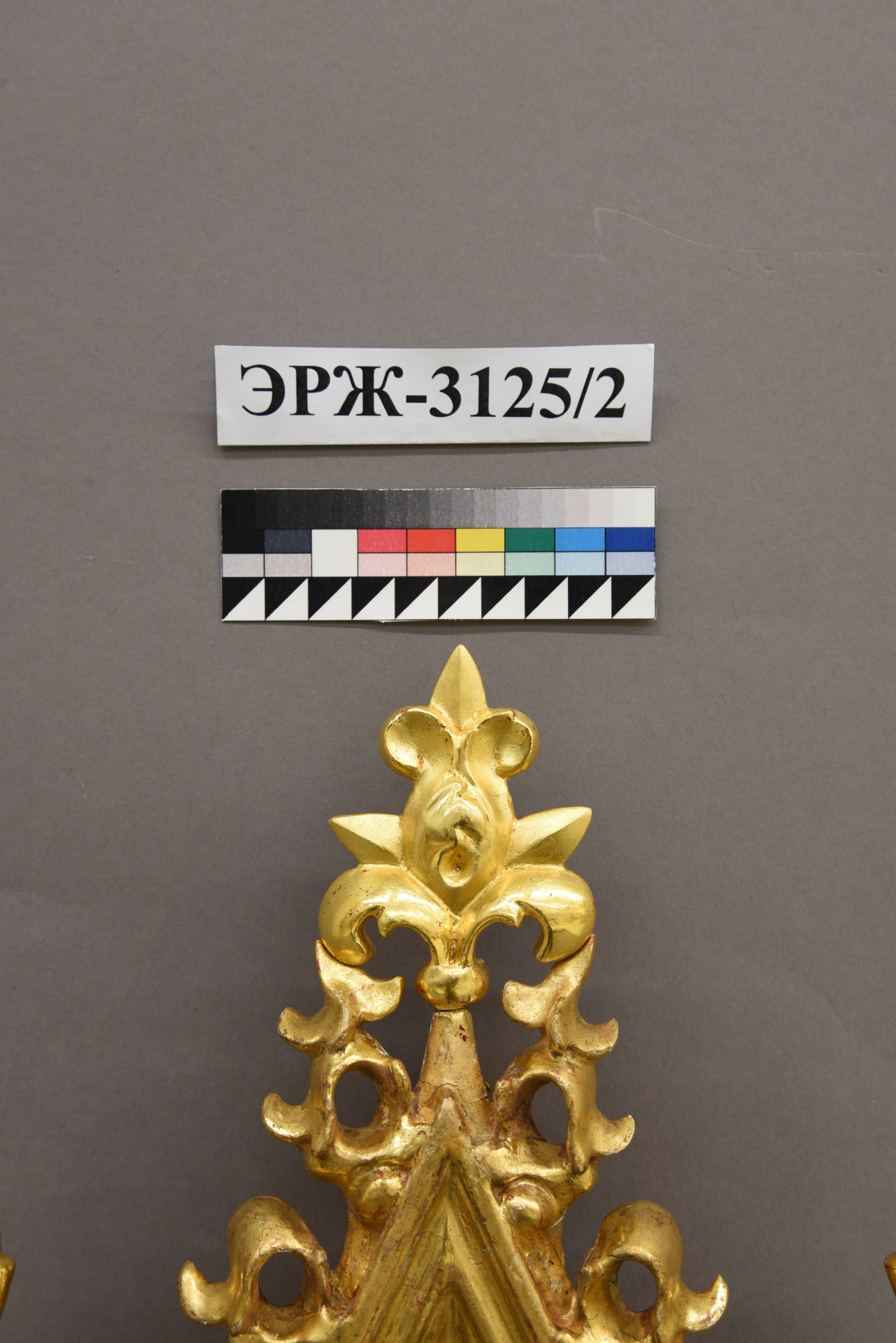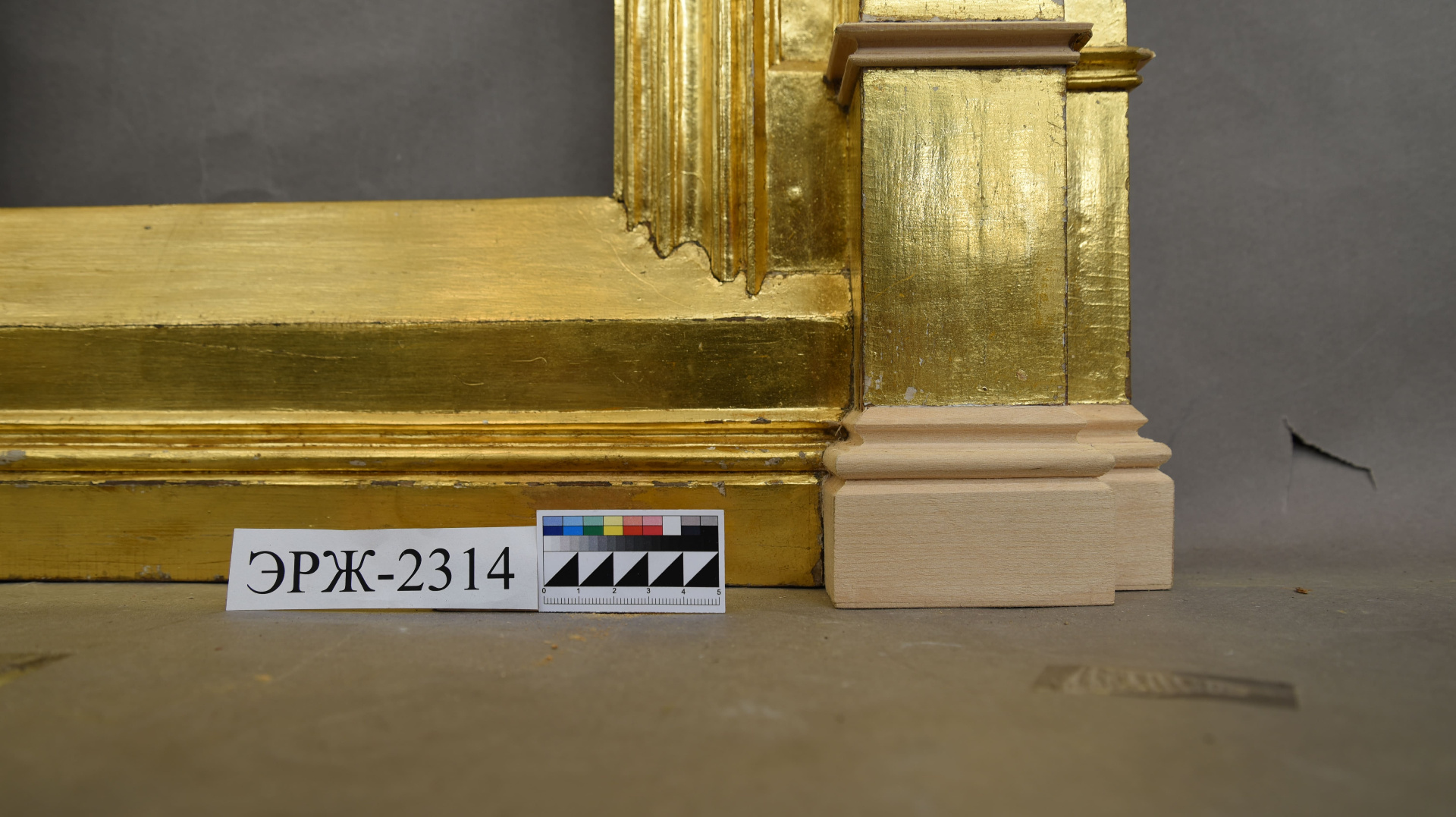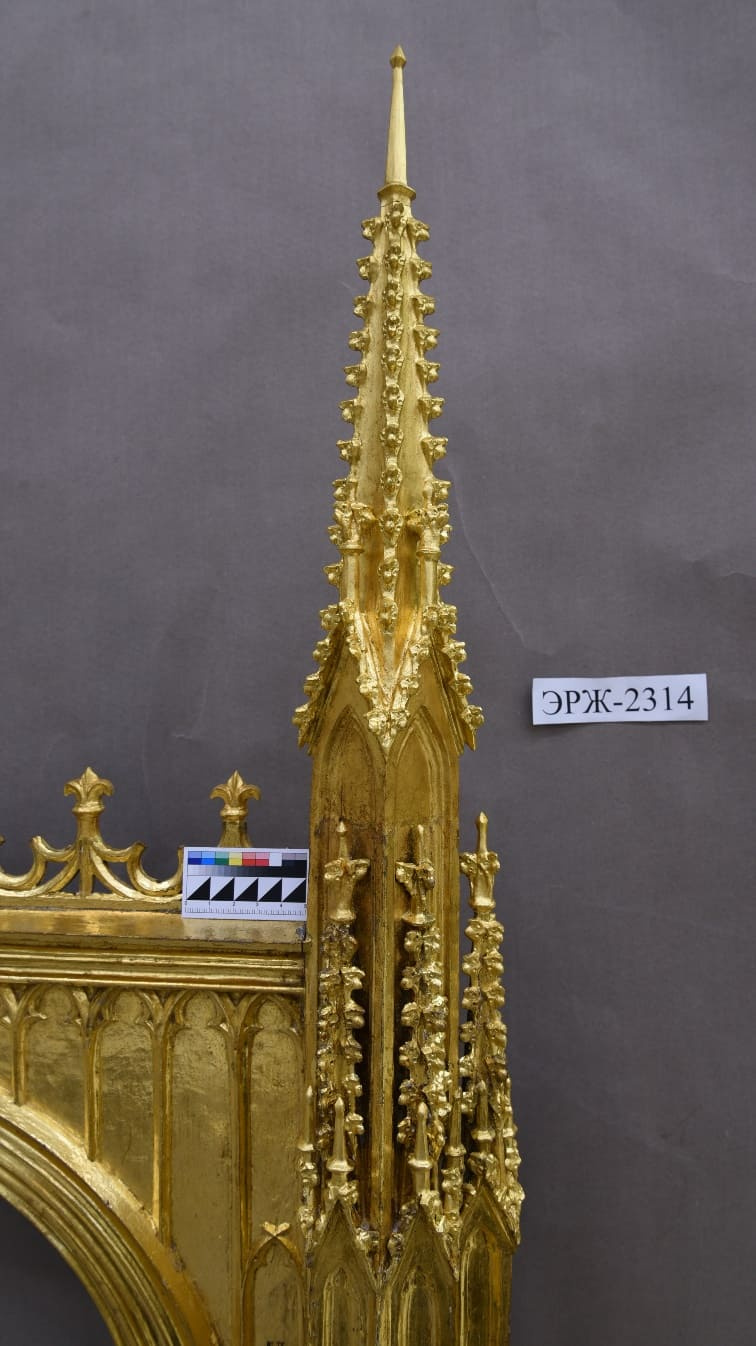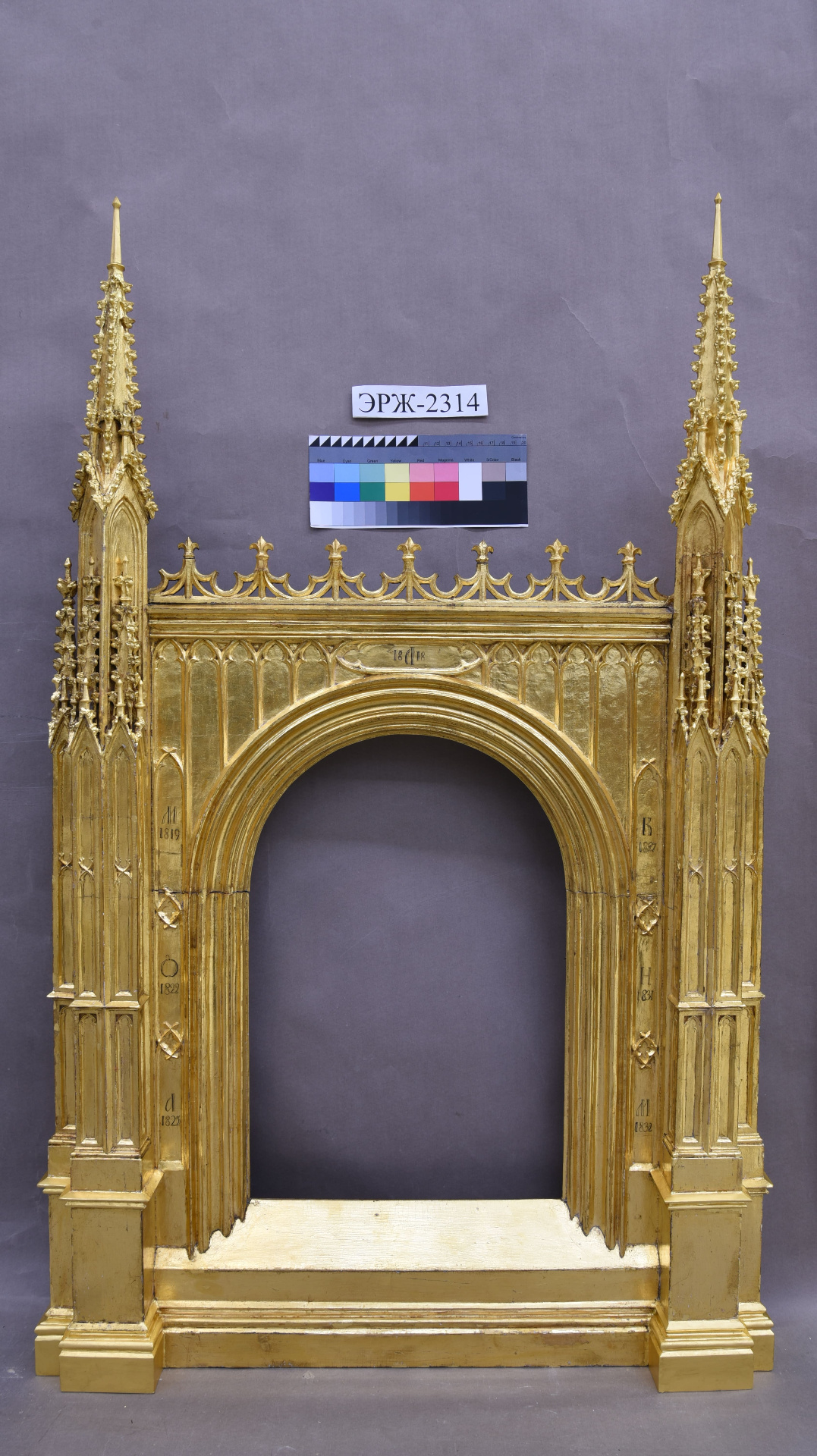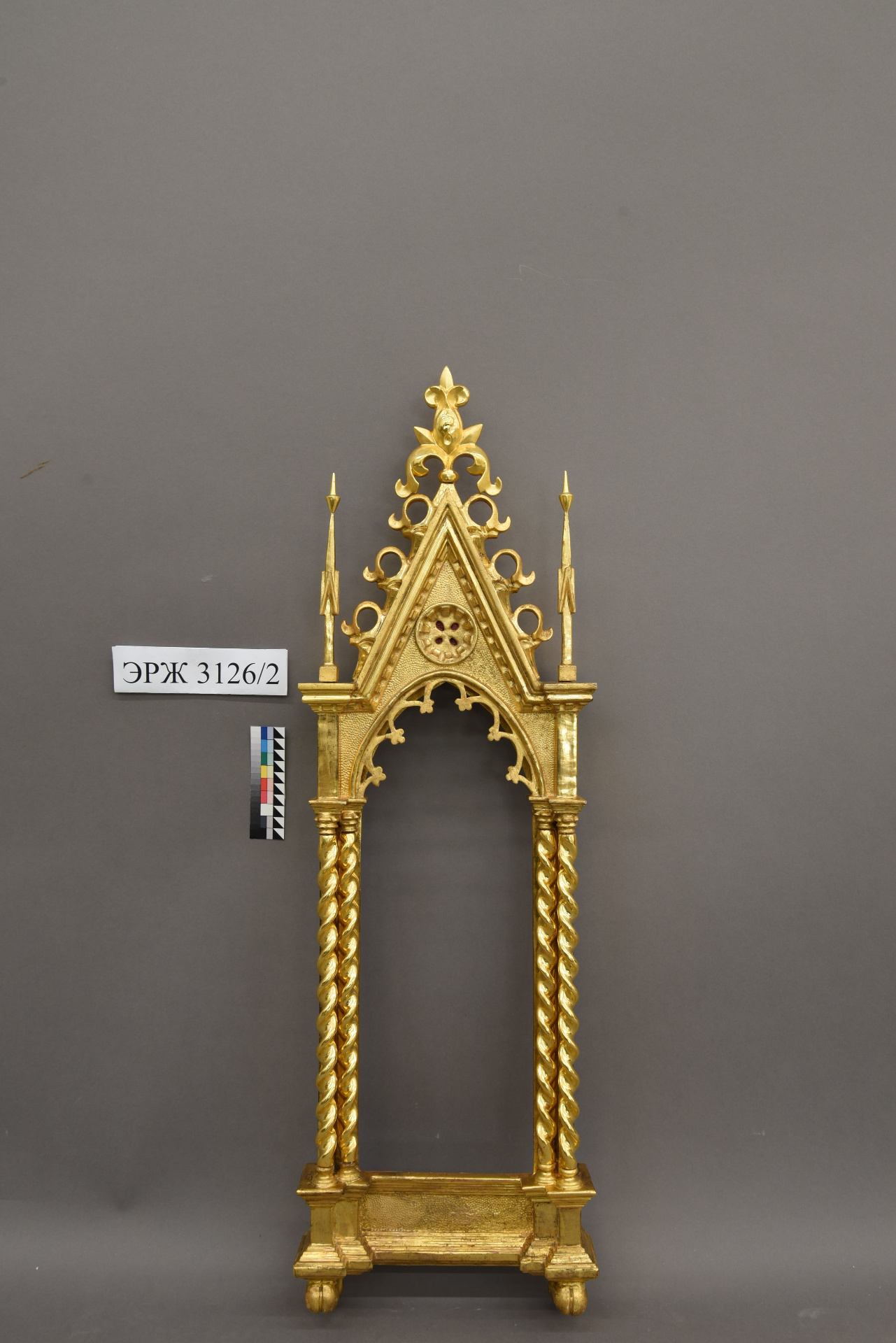Conservation of three frames in neo-Gothic style
In the collection of the State Hermitage Museum there are three wonderful frames in the neo-Gothic style that are in urgent need for restoration treatment.
The first Neo-Gothic frame (92 х 60 cm) was made in 1842 for «Saint George», the main work of Russian-German artist Gerhardt Wilhelm von Reutern. The painting was intended as a gift for Nicholas I and Alexandra Fyodorovna’s silver wedding celebration. The Empress was a great admirer of neo-Gothic style. The first letters of names and birth dates of the Imperial couple’s children are indicated on the frame. Thus the frame is an integral part of the painting’s overall concept aimed at glorifying the reigning house of the Romanovs and their offspring. In this way the frame becomes a kind of “epigraph” for the painting.
Two other frames, the so-called ‘Grand Tour’ (67,5 х 23,5 cm and 66 х 22 cm), are a typical example of highest-level souvenir production made in Florence in the middle of the 19th c. Starting from the 17th century, Grand Tour was a traditional journey around Europe often undertaken for educational purposes, popular among young people from the high society. Main places of interest were major cultural centers of Europe. Travellers would often bring souvenirs from the popular sights: miniature copies of ancient buildings, cameos, engravings, paintings etc. Thus, in Florence in the middle of the 19th century many small copies from the works of Fra Angelico were produced. Following the tastes of the period, these copies were mounted intooriginal frames of neo-Gothic style. Two of such frames today edge figures of trumpeting angels and are kept in the Hermitage collection.
Present condition:
Frame for Reutern’s painting
There are a lot of constructive cracks, abrasions of gilding, losses and exfoliation of gesso, cracks in gilding and gesso: the surface is soiled. 8 fragments of gilded plinth, right top tower, upper sections of openwork carving above the cornice, and small stucco fragments are lost.
The first Grand Tour frame
There are constructive cracks, soiling of surface, abrasions of gilding, losses and exfoliation of gesso, cracks in gilding and gesso. Some pieces of carving and carved top are lost.
The second Grand Tour frame
There are constructive cracks, soiling of surface, abrasions of gilding, losses and exfoliation of gesso, cracks in gilding and gesso, and minor losses of carving. Carved top and four spiral columns, two column bases and two pieces of cornice are lost.
Required restoration treatment:
The project provides for a full-scale restoration of frames with reconstruction of the lost carving, moldings and gilding.
- Strengthening the lagging of gesso and gluing cracks in gildings
- Removing of surface dirt
- Removing of the destructed varnish from the gilded surface
- Reinforcement of the defects and cracks in the frames
- Filling in losses of the carvings and mastic
- Preparing for gilding
- Gilding of the new carving and reconstructed gesso
- Photographing before and after restoration
Restoration works will be implemented by the specialists of the Hermitage Laboratory of Scientific Restoration of Furniture.
